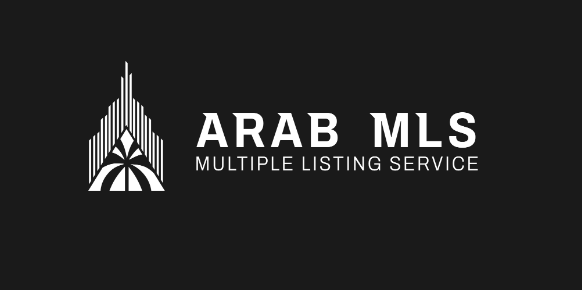As the real estate market becomes increasingly globalized, the standards governing property listings evolve to accommodate the needs of diverse international audiences. For Multiple Listing Services (MLS) operating in cross-border contexts, integrating international property standards is no longer optional—it represents a strategic imperative. This integration encourages transparency, fosters trust, simplifies comparisons, and ultimately expands market reach for agents and consumers alike. However, reconciling the differences embedded in regional property regulations, measurement systems, and legal frameworks is a complex endeavor. This article explores the rationale, challenges, and practical approaches to harmonizing international property standards within MLS listings, emphasizing the benefits that such alignment brings to a modern real estate ecosystem.
The Growing Need for Standardization in a Global Market
Real estate transactions increasingly involve participants from multiple countries. Foreign investors seek properties abroad, expatriates relocate for work, and digital platforms facilitate virtual home searches without geographic constraints. In this environment, inconsistent listing formats, measurement units, and terminology can create confusion, slow down decision-making, and breed mistrust among buyers and sellers who may not share a common understanding of property attributes.
MLS systems that present standardized, internationally recognized property information reduce these frictions. Standardization enables buyers to compare listings seamlessly, regardless of origin, while agents can confidently communicate details without risking misinterpretation. Moreover, such harmonization aids regulatory compliance and bolsters the MLS’s credibility as a reliable data source in an interconnected marketplace.

Key International Property Standards Impacting MLS Listings
Multiple organizations have developed frameworks and guidelines aimed at unifying real estate information. Notably, the International Property Measurement Standards (IPMS) initiative provides a globally accepted methodology for calculating floor areas and usable spaces. Adoption of IPMS allows MLS platforms to report property sizes uniformly, replacing inconsistent local methods such as Gross Internal Area (GIA), Net Internal Area (NIA), or other regional conventions. Presenting property size data in square meters, along with conversion tools for square feet, can also help international users interpret measurements effortlessly.
Beyond size measurement, the Real Estate Transaction Standard (RETS) defines a data exchange protocol widely used in North America and other markets to facilitate interoperability between listing services and vendor platforms. Extensions to RETS or alternative standards like MLS Data Dictionary incorporate international data fields that accommodate jurisdiction-specific attributes such as property tenure type, zoning classifications, or construction materials.
Environmental certifications, energy performance metrics, and accessibility features are other dimensions rapidly gaining global attention. Integrating these elements into MLS listings reflects growing consumer awareness and compliance with international green building and accessibility standards.
Technical Challenges in Integrating International Standards
MLS providers face several hurdles when embedding international property standards into their systems. Legacy databases may store measurements and property descriptions based on locally entrenched practices, requiring extensive data cleansing and restructuring to meet global guidelines. Mapping existing fields to standardized formats demands careful analysis to prevent data loss or misrepresentation.
Localization remains an obstacle beyond mere translation. Terminology related to property condition, room names, or legal status can vary significantly. For instance, a “flat” in the UK corresponds to an “apartment” in the US, while “leasehold” ownership structures differ around the world. MLS systems must allow flexible metadata tagging or multilingual glossaries to ensure clarity.
Implementing international measurement techniques in listings often entails retraining agents who input data, as well as educating consumers on the meaning and implications of reported metrics. User interfaces might be redesigned to toggle between measurement units and provide explanatory notes, fostering inclusivity without alienating local users.
Legal and Regulatory Considerations
Compliance with various national laws adds layers of complexity to international MLS listings. Data privacy regulations such as Europe’s GDPR govern how personal and property data can be collected, stored, and shared. Cross-border data transfers must adhere to these rules to avoid penalties.
Property advertising laws also vary, with some jurisdictions mandating the disclosure of environmental risks, historic designations, or mandatory inspections. Ensuring MLS listings meet such diverse requirements necessitates modular data entry forms customizable by region, as well as automated checks to prompt mandatory disclosures.
Establishing consistent liability frameworks around MLS data accuracy and representation presents additional challenges, particularly when international transactions are involved. Clear disclaimers and producer responsibility policies help mitigate risks for MLS administrators and member brokers.
Strategies for Effective Integration
Successful integration of international property standards within MLS platforms depends on a blend of technological flexibility, stakeholder collaboration, and educational efforts. A phased implementation approach allows incremental adoption, beginning with high-impact elements such as standardized measurement reporting, before extending to nuanced legal or environmental data.
Collaboration with international standard-setting bodies, property boards, and technology vendors fosters consensus and smooth technical integration. MLS organizations can participate in pilot projects testing new data schemas, which provide valuable feedback on usability and compliance.
Providing training programs to member agents ensures consistent and accurate data entry. Educational materials should explain the rationale behind standards and offer practical guidance on measurement methods or required disclosures. Educational outreach can extend to consumers via blogs, FAQs, or video tutorials, helping them interpret and trust internationalized listings.
Leveraging APIs and open data standards facilitates integration with third-party services, including valuation tools, virtual tours, and blockchain-based title registries. This interconnectedness improves listing richness and transaction security, benefiting the entire property ecosystem.

Benefits to Stakeholders
For buyers, access to MLS listings harmonized to international standards means more reliable property comparisons, simplified decision-making, and reduced risk of surprises post-purchase. Sellers gain improved market visibility and credibility, as listings meeting global benchmarks attract a wider audience.
Real estate professionals benefit from smoother cooperation with overseas colleagues, more efficient marketing processes, and a reduced likelihood of disputes. MLS organizations position themselves as leaders in market modernization, attracting technology partners and investors interested in scalable, interoperable data platforms.
Government agencies and regulators appreciate enhanced market transparency and consumer protection that standardization supports, aiding in urban planning and economic analysis.
Conclusion
Integrating international property standards into MLS listings represents both a challenge and an opportunity for the global real estate industry. Emerging technologies, evolving regulations, and increasingly mobile consumer bases compel MLS platforms to adopt uniform, transparent, and flexible data practices. By aligning with international measurement standards, accommodating diverse legal frameworks, and educating users, MLS providers transform fragmented market data into trusted global assets.
This transformation not only elevates operational efficiency and trust among participants but also fuels cross-border investment and collaboration. Ultimately, MLS platforms that embrace international standards stand at the forefront of a new era in real estate—one defined by openness, precision, and inclusivity.
As real estate markets continue to globalize, integrating these standards is not simply a matter of technical compliance but a strategic imperative to remain relevant and competitive in an interconnected world.
Frequently Asked Questions about Integrating International Property Standards into MLS Listings
-
What are international property standards, and why are they important for MLS listings?
International property standards provide unified measurement methods and data formats that help ensure consistency, transparency, and comparability across global real estate markets. -
How do international standards impact property measurement in MLS platforms?
Standards like the International Property Measurement Standards (IPMS) define consistent ways to measure floor areas, helping buyers and sellers understand exact property size regardless of location. -
What challenges do MLS platforms face when adopting international standards?
Challenges include aligning legacy data, managing language and terminology differences, training agents to use new formats, and ensuring compliance with diverse legal regulations. -
Can MLS platforms support multiple languages and legal frameworks effectively?
Yes, by implementing localization features such as multilingual interfaces, customizable data fields, and region-specific regulatory disclosures, MLS platforms accommodate global users. -
How do privacy laws affect international MLS data sharing?
Laws like GDPR require MLS platforms to protect personal information, regulate data transfers, and obtain consent to ensure user privacy and legal compliance. -
What benefits do buyers and sellers gain from internationally standardized MLS listings?
They receive clearer, more accurate information, enabling better property comparisons, increased trust, and smoother cross-border transactions. -
How does integration with international standards facilitate technology adoption in real estate?
It creates seamless interoperability with tools like virtual tours, valuation apps, and blockchain registries, enhancing listing richness and transaction security. -
What steps can MLS providers take to implement international standards successfully?
Phased rollouts, collaborations with standards organizations, agent training programs, and adaptive platform architecture are key strategies for effective integration.













